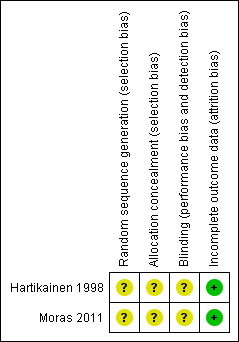Contenido relacionado
Revisiones y protocolos relacionados
Paul O Phelps, Samuel A. Abariga, Benjamin J Cowling, Dinesh Selva, Marcus M Marcet | 7 abril 2020
Carisa Petris, Don Liu | 12 julio 2017
Chongfei Jin, Xinyi Chena, Andrew Law, Yunhee Kang, Xue Wang, Wen Xu, Ke Yao | 20 septiembre 2017
Viral V Juthani, Elizabeth Clearfield, Roy S Chuck | 3 julio 2017
James F Kirwan, Christina Rennie, Jennifer R Evans | 13 junio 2012
Amanjeet Sandhu, Hari Jayaram, Kuang Hu, Catey Bunce, Gus Gazzard | 28 mayo 2021
Jennifer Burr, Augusto Azuara‐Blanco, Alison Avenell, Anja Tuulonen | 12 septiembre 2012
Meghal Gagrani, Itika Garg, Deepta Ghate | 27 agosto 2020
Gianni Virgili, Francesca Menchini | 19 octubre 2005
Jian Lee Yeong, Emma Loveman, Jill L Colquitt, Pamela Royle, Norman Waugh, Noemi Lois | 17 diciembre 2020









